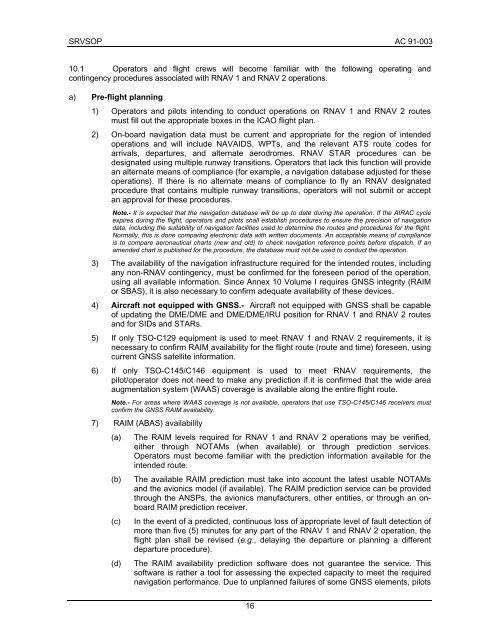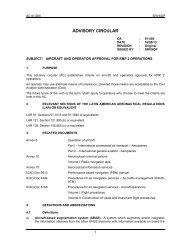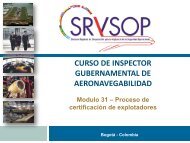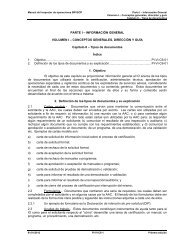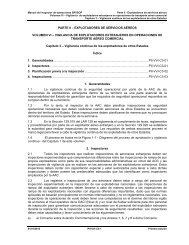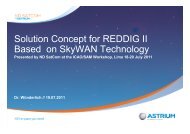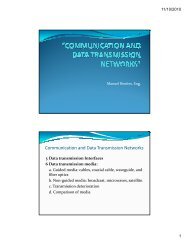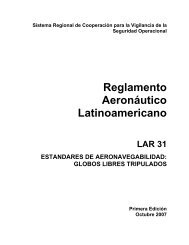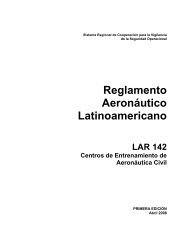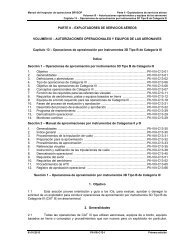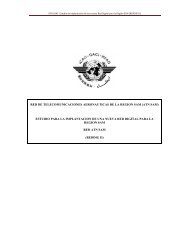ac 91-003 srvsop - ICAO
ac 91-003 srvsop - ICAO
ac 91-003 srvsop - ICAO
Create successful ePaper yourself
Turn your PDF publications into a flip-book with our unique Google optimized e-Paper software.
SRVSOP AC <strong>91</strong>-<strong>003</strong><br />
10.1 Operators and flight crews will become familiar with the following operating and<br />
contingency procedures associated with RNAV 1 and RNAV 2 operations.<br />
a) Pre-flight planning<br />
1) Operators and pilots intending to conduct operations on RNAV 1 and RNAV 2 routes<br />
must fill out the appropriate boxes in the <strong>ICAO</strong> flight plan.<br />
2) On-board navigation data must be current and appropriate for the region of intended<br />
operations and will include NAVAIDS, WPTs, and the relevant ATS route codes for<br />
arrivals, departures, and alternate aerodromes. RNAV STAR procedures can be<br />
designated using multiple runway transitions. Operators that l<strong>ac</strong>k this function will provide<br />
an alternate means of compliance (for example, a navigation database adjusted for these<br />
operations). If there is no alternate means of compliance to fly an RNAV designated<br />
procedure that contains multiple runway transitions, operators will not submit or <strong>ac</strong>cept<br />
an approval for these procedures.<br />
Note.- It is expected that the navigation database will be up to date during the operation. If the AIRAC cycle<br />
expires during the flight, operators and pilots shall establish procedures to ensure the precision of navigation<br />
data, including the suitability of navigation f<strong>ac</strong>ilities used to determine the routes and procedures for the flight.<br />
Normally, this is done comparing electronic data with written documents. An <strong>ac</strong>ceptable means of compliance<br />
is to compare aeronautical charts (new and old) to check navigation reference points before dispatch. If an<br />
amended chart is published for the procedure, the database must not be used to conduct the operation.<br />
3) The availability of the navigation infrastructure required for the intended routes, including<br />
any non-RNAV contingency, must be confirmed for the foreseen period of the operation,<br />
using all available information. Since Annex 10 Volume I requires GNSS integrity (RAIM<br />
or SBAS), it is also necessary to confirm adequate availability of these devices.<br />
4) Aircraft not equipped with GNSS.- Aircraft not equipped with GNSS shall be capable<br />
of updating the DME/DME and DME/DME/IRU position for RNAV 1 and RNAV 2 routes<br />
and for SIDs and STARs.<br />
5) If only TSO-C129 equipment is used to meet RNAV 1 and RNAV 2 requirements, it is<br />
necessary to confirm RAIM availability for the flight route (route and time) foreseen, using<br />
current GNSS satellite information.<br />
6) If only TSO-C145/C146 equipment is used to meet RNAV requirements, the<br />
pilot/operator does not need to make any prediction if it is confirmed that the wide area<br />
augmentation system (WAAS) coverage is available along the entire flight route.<br />
Note.- For areas where WAAS coverage is not available, operators that use TSO-C145/C146 receivers must<br />
confirm the GNSS RAIM availability.<br />
7) RAIM (ABAS) availability<br />
(a) The RAIM levels required for RNAV 1 and RNAV 2 operations may be verified,<br />
either through NOTAMs (when available) or through prediction services.<br />
Operators must become familiar with the prediction information available for the<br />
intended route.<br />
(b) The available RAIM prediction must take into <strong>ac</strong>count the latest usable NOTAMs<br />
and the avionics model (if available). The RAIM prediction service can be provided<br />
through the ANSPs, the avionics manuf<strong>ac</strong>turers, other entities, or through an onboard<br />
RAIM prediction receiver.<br />
(c) In the event of a predicted, continuous loss of appropriate level of fault detection of<br />
more than five (5) minutes for any part of the RNAV 1 and RNAV 2 operation, the<br />
flight plan shall be revised (e.g., delaying the departure or planning a different<br />
departure procedure).<br />
(d) The RAIM availability prediction software does not guarantee the service. This<br />
software is rather a tool for assessing the expected cap<strong>ac</strong>ity to meet the required<br />
navigation performance. Due to unplanned failures of some GNSS elements, pilots<br />
16


